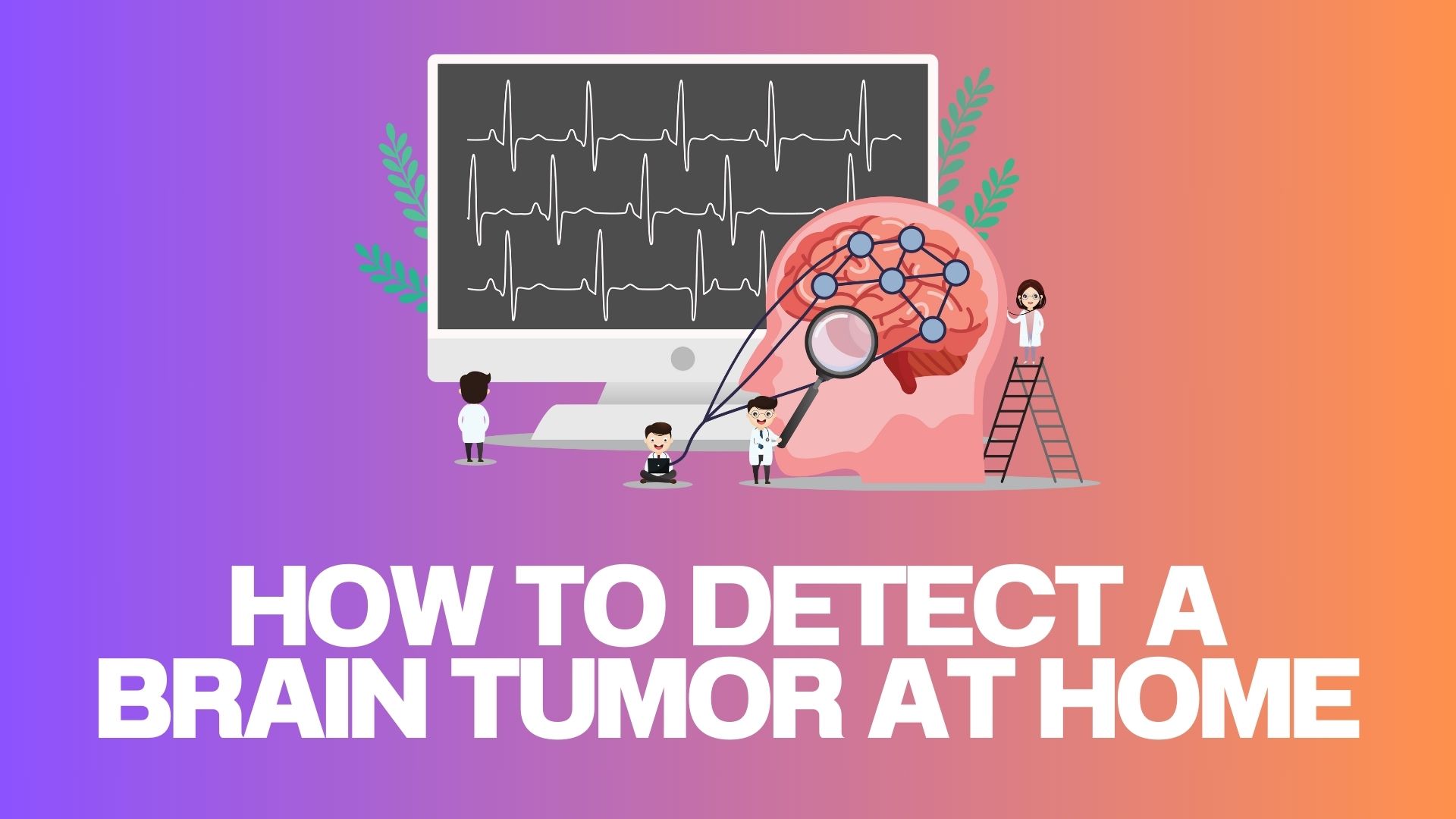Brain tumors are a dangerous disorder that can afflict people of any age and could even be fatal. Early detection of a brain tumor, however, can significantly improve the prognosis for both therapy and recovery. Although routine medical examinations are crucial, there are additional techniques to self-screen for brain tumors at home.
We’ll talk about the warning signs and symptoms of brain tumors in this blog post, as well as how to identify them at home. You may take charge of your health and perhaps detect a brain tumor early on by being proactive and aware of any possible warning indicators.
Understanding the Basics: What is a Brain Tumor?
An aberrant cell growth inside the brain is called a brain tumor. It may be malignant (cancerous) or benign (noncancerous). Malignant tumors can invade surrounding tissues and spread to other parts of the body, whereas benign tumors usually grow slowly and remain contained within the brain.
Depending on where they occur, brain tumors can impact different functions and develop in different parts of the brain. Headaches, seizures, changes in vision or hearing, problems with balance or coordination, and changes in cognition or personality are some of the symptoms they can cause.
Though the precise etiology of brain tumors is still unknown, some risk factors, such as radiation exposure, a family history of brain tumors, and specific genetic abnormalities, are associated with the disease. On the other hand, a large number of brain tumor instances involve people who have no established risk factors.
Knowing the fundamentals of brain tumors is crucial if you want to be able to see any possible warning signals and get help as soon as possible. Effective treatment and better results depend on early diagnosis and detection.
Identifying the Common Symptoms of a Brain Tumor
Early detection of brain tumor warning symptoms is essential for prompt treatment and better results. There are certain common indicators to look out for, though the symptoms might vary depending on the location and size of the tumor.
A common sign of a brain tumor is a continuous headache that gets worse with time. Along with these headaches, vomiting, nausea, and light sensitivity are possible side effects. Another red flag is experiencing seizures, particularly if there is no prior history of epilepsy.
A brain tumor might also be indicated by changes in hearing or vision. Symptoms like double vision, blurry vision, or abrupt vision loss should be taken seriously. Similarly, symptoms like hearing loss, tinnitus, or issues with balance or coordination could be present.
Furthermore, it’s important to pay attention to any changes in cognition or personality, such as memory issues, disorientation, mood swings, or unexpected behavioral changes.
For a more thorough assessment, it’s crucial to speak with a healthcare provider if you consistently encounter any of these symptoms. Recall that a tumor’s successful treatment and recovery can much depend on early detection. Remain alert and give your health priority.
Simple Self-Check Techniques for Early Detection at Home
Carrying out a self-assessment for brain tumors at home might be a proactive approach to keep an eye on your health and possibly identify any early warning indicators. Though it’s crucial to keep in mind that self-checks cannot take the place of expert medical guidance, there are a few easy methods you can attempt.
Initially, notice any changes in your physical appearance or general state of health. Any new or worsening symptoms, such as ongoing headaches, seizures, altered vision or hearing, trouble balancing or coordination, or changes in cognition or personality, should be noted. Making a note of these symptoms and talking to a medical expert about them can aid in the diagnosis process.
By routinely feeling for any unusual lumps or bumps on your head and neck, you can also conduct a self-check. Feel your scalp, neck, and head gently for any changes in size, shape, or texture. Furthermore, be mindful of any strange feelings in your head or face, such as tingling or numbness.
Self-checks are beneficial, but it’s important to keep in mind that they should be used in addition to routine medical examinations conducted by a qualified practitioner. A physician alone is qualified to provide an accurate diagnosis and, if necessary, suggest the best course of action. So, be careful to get medical help right once if you experience any worrisome symptoms. Remain alert and give your health priority.
The Importance of Professional Diagnosis and Regular Check-ups
To identify and treat brain tumors, a professional diagnosis and routine examinations are essential. Self-checks at home can be useful for keeping an eye on your health, but only a medical professional can accurately diagnose a condition and, if necessary, propose the best course of action.
Physicians are equipped with the knowledge, skills, and cutting-edge diagnostic equipment necessary to identify brain tumors that lay hidden to the naked eye.
Having routine check-ups with your doctor enables you to catch any changes or symptoms that might point to a brain tumor early on. Doctors can evaluate your general health and spot any potential warning signals through physical examinations, investigations of your medical history, and maybe more testing.
A professional diagnosis is also necessary for appropriate treatment planning. Treatments for different kinds of brain tumors, such as radiation therapy, chemotherapy, or surgery, are necessary. Working out the best course of action for therapy might be challenging in the absence of a professional diagnosis.
Recall that although self-evaluations conducted at home are an important preventative step, frequent check-ups, and expert advice should always be included. You may regain control over your health and guarantee the best possible outcome for brain tumor identification and treatment by placing a high priority on getting a professional diagnosis and routine check-ups.
